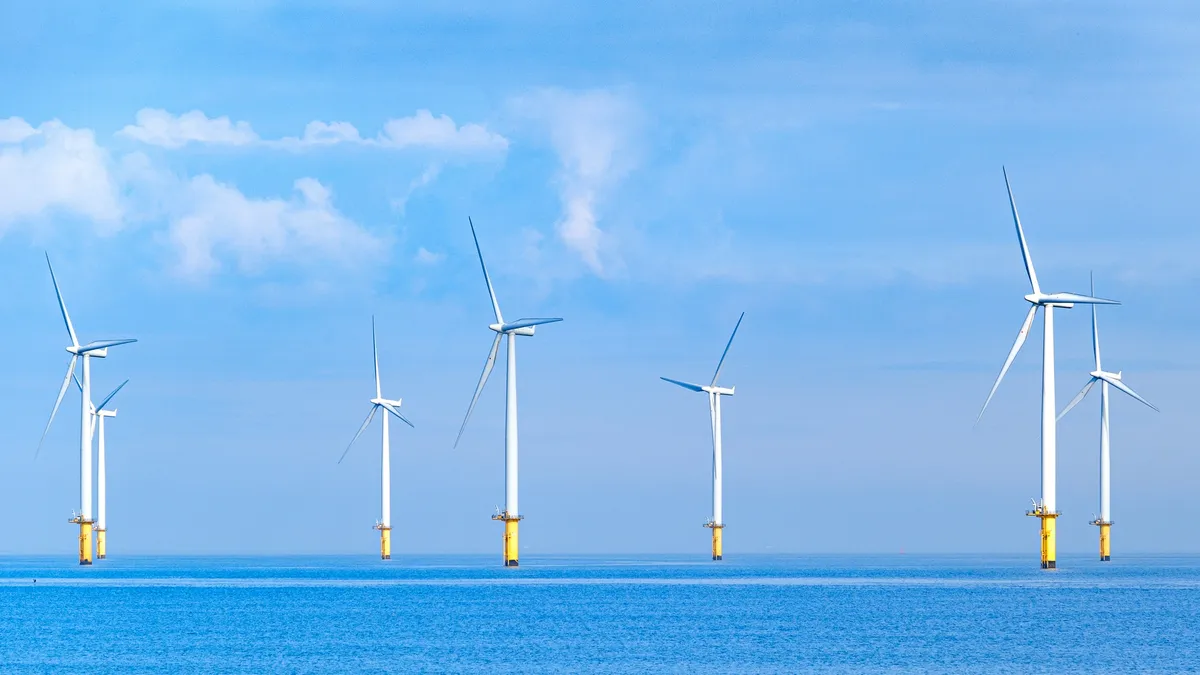Dive Brief:
- The California Energy Commission on Wednesday voted to adopt offshore wind energy preliminary planning goals ranging from 2,000 MW to 5,000 MW by 2030, and 25,000 MW by 2045 — up from an initial proposed goal of 10,000 MW to 15,000 MW goal by 2045 — as part of the state’s broader push to decarbonize its electric grid.
- Agency staff proposed the goals in response to Assembly Bill 525, legislation passed last year that directed the commission to establish planning goals for offshore wind and a strategic plan to develop the resource in federal waters off the California coastline.
- “This is truly excellent news for California’s offshore wind industry, workers and electricity ratepayers. These goals set an ambitious course and show that California is very serious about going big on offshore wind, to drive economies of scale and generate the very substantial clean power, climate and jobs benefits that this renewable energy resource can generate for our state,” Adam Stern, executive director of trade group Offshore Wind California, said at the agency meeting.
Dive Insight:
California Gov. Gavin Newsom, D, signed an agreement to open up the state’s coastline for offshore wind development last year; this May, the Bureau of Ocean Energy Management followed up with a proposed sale notice for leases off the Northern California and Central California coasts.
Also in May, the CEC released a draft report that proposed a preliminary planning goal of 3,000 MW of offshore wind by 2030 and a 10,000 MW to 15,000 MW goal for 2045. In the final report, the agency is now envisioning between 2,000 MW and 5,000 MW of offshore wind by 2030, with the upper range potentially coming from either building out the full potential of the Morro Bay wind energy area or building in a combination of the Morro Bay and Humboldt areas. For 2045, the agency is now proposing a planning goal of 25,000 MW.
The increase in the 2045 planning goal comes, in part, because of a letter penned by Newsom to regulators last month, urging that they create a planning goal of at least 20 GW of offshore wind by 2045, according to the CEC.
The agency’s staff is cognizant that the goals may need to be updated periodically as the floating offshore wind industry evolves, technology advances, and lessons are learned from early deployments, Rhetta deMesa, project manager with the commission, said during the meeting.
“It is also important to emphasize that these planning goals are not procurement targets. Any future procurement authorization of offshore wind will have to go through all necessary resource planning, procurement and permitting requirements,” deMesa added.
Offshore wind is a constant, quite predictable resource, which means it can serve as a kind of “firm power,” even if it doesn’t meet that traditional definition, according to CEC Commissioner Andrew McAllister.
“So it is a big piece of the puzzle that’s actually taking shape in front of us,” he said at the meeting.














